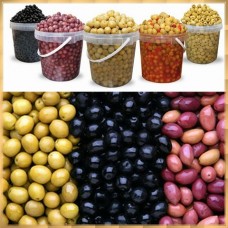Table Olive
Table olives are highly nutritious foods
with a balanced fat content, consisting mainly of monounsaturated oleic acid.
Eating olives also provides fiber, vitamins and minerals. Olives are an
essential part of the Mediterranean diet and a star ingredient in hundreds of
dishes. They play an important role from a nutritional point of view for the
population of many Mediterranean countries, especially after long periods of
fasting.
Olives in general have the ability to
cleanse the digestive tract in depth the oil contained in olives helps
lubricate the digestive tract and prevent any microbes or residues from
clinging to the intestinal walls in case of constipation olives are allies of
choice also in case of digestive disorders such as bloating or difficult digestion
or bad breath. It is also a very good weapon against bad cholesterol. But the
olive is above all an antioxidant, a virtue that helps us to stay young and
healthy. It would therefore be a shame to do without.
Purple and black olives have almost the same
qualities. They are both laxatives and appetizers. They are also cholagogues:
they facilitate the evacuation of bile to the intestine, which allows good
digestion.
This fruit is rich in fat. Black olives
contain less oil than green olives (7.69g against 16.3g per 100g).
Green olive is less caloric than black, at
120 calories per 100g against 295. It contains more water, rich in chlorine,
calcium, oleic fatty acids, linoleic (omega-6) as well as alpha-linolenic
(Omega 3).
The green olive contains fewer vitamins and
minerals than the black one. It also contains less salt, 1609 mg per 100g,
while the quarter note has double, with 3288 mg per 100g. However, black has
greater antioxidant potential and even contains some iron.
Olives
provide 9.5% of the RDI in Potassium. Both have a good content of calcium (14%
of the RDI) and vitamins A and E.
What is a "portion" of olives worth?
Refine Search
Natural Black Olive
This innovative food product is linked to a geographical origin and to the traditions of the region ..
250DZD Ex Tax: 250DZD
Olive Turning Colour
Olive harvested before full maturity, at veraison.These are obtained from olives that are picked wh..
250DZD Ex Tax: 250DZD
Table Olive in Bucket
Table olives are highly nutritious foods with a balanced fat content, consisting mainly of monouns..
1,600DZD Ex Tax: 1,600DZD






















